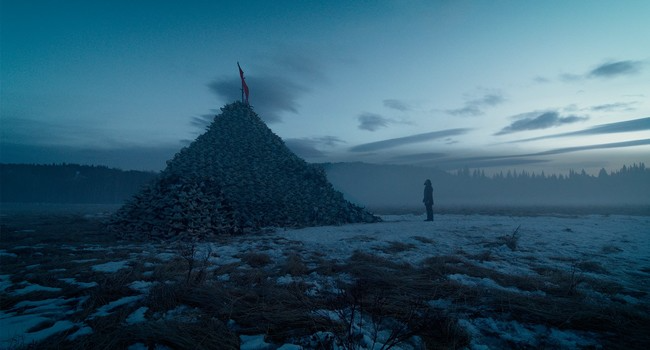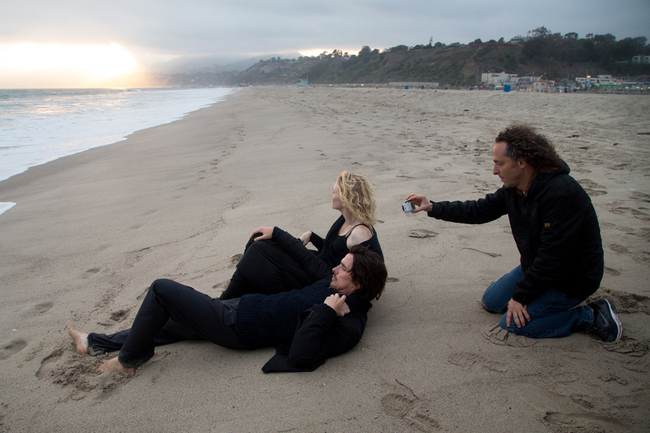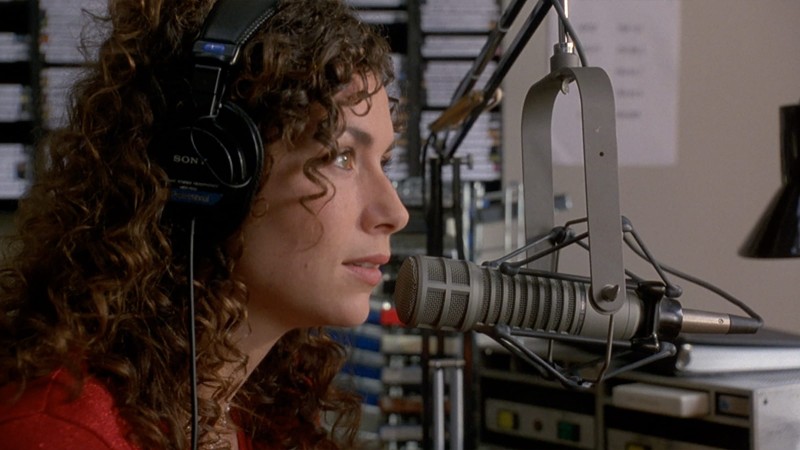Designing for the Screen: An Interview with Jack Fisk

Recently, I had the chance to speak with Fisk about his hands-on, physical approach to design; where he finds inspiration; and what it’s been like to work with some of the world’s most iconic directors.
You’ve been working with David Lynch and Terrence Malick for four decades now. What has it been like to evolve with them as collaborators?
It’s always wonderful when you’re able to work with the same director or crew over and over because you have a history together, you have reference points, you have a better understanding of where the other person is coming from and of each other’s abilities. With Terry we don’t talk a lot about the sets, but we talk about the story. Often, I’ll show up to shoot something and he hasn’t even seen a drawing of the set, so he loves the surprise of it. David Lynch is an artist-designer and he’s created a whole world in his head, so the challenge is to create that world. So it helps the longer you’ve known someone.

Alejandro González Iñárritu, when I first met him, I thought, Oh, this is a passionate director—this is going to be fun. He’s such a good artist and so passionate about his work. And he’s discovering it in the moment; he doesn’t go in with a lot of preconceived ideas of what it’s going to be. He’s the opposite of David Lynch. Alejandro has ideas, he might have an image that he wants to put somewhere in the film, but he’s really wrestling with everything to do with the film—the actors, locations, sets, wardrobe—and he’s a real hands-on wrestler. He never gives up, he’s tenacious and passionate, and he’s a sweetheart under all of that. I found him very easy to work with because I understand where he’s coming from. The film is the most important thing, it wasn’t my comfort or his comfort it wasn’t anybody’s comfort, it was what does the film need. “Don’t make it easy for me, but make it right.”
As someone who’s influenced so many filmmakers and artists with the images you’ve created, where do you go for inspiration?
I get inspiration from everything around me. When I’m working on films it comes from locations, stories, or people I meet. You never know where it’s going to come from. I remember one day on There Will Be Blood, we broke for lunch, and the art director and I were sitting down by the railroad tracks, and I was looking at this building, and I could suddenly see the whole town of Marfa, Texas, and the way it was built right parallel to the tracks. And that became the inspiration for the town of Little Boston that we built for the movie. It was something that was right in front of me and I just had to see it. Inspiration comes from everywhere, you just have to keep yourself open.

I think of Edward Hopper as the best production designer or art director. With just a few objects he tells a great story, and I love how minimal his work is and how important each object becomes. So I look at his work a lot. I’m inspired by painters because they look at things, and what they make may not be a minute, factual representation of what they see, but it’s more of a feeling of what they’ve seen.
Do you have a set way you approach a new film?
The way I work is different from film to film, and it’s also different from director to director. Different directors have different needs, but the story always dictates how I’m going to approach it. A lot of times it involves a lot of research early on, and in that research I find clues—then, working with the director and finding locations, I find more clues. I try not to make any final decisions until the last possible minute, and then I run around like crazy to make it happen.

I can’t imagine any other way of working. First of all it’s fun to be physically involved. You feel a little bit like Mickey Rooney and Judy Garland saying, “Let’s put on a show.” You’re out there painting the scenery and moving a park bench or whatever. I like it when the film company is really a unit and we’re working together to make a show. I want to make it the best it can be when it gets on screen, and I’m there protecting the location and the set so that if the director wants to change something, I can help them do that in a way that works for the design of the film the way I see it. I’m always available; I’ll stay up all night just so I can be on the set in the morning. When you become like a companion and you’re there to answer questions, trust develops.
How do you collaborate with cinematographers?
My work is dependent on the cinematographer and their work is dependent on the designer, because you can only shoot what you provide and what you provide is only going to work if it’s shot properly. So I think it’s a great partnership. I’ve worked with Chivo [Emmanuel Lubezki] on six films now and I love it. He’s so great, he makes my work better, and it makes me work harder because he’s so good. You don’t ever want your work sabotaged by somebody who doesn’t appreciate it or make it better, but if you work with good people that care about the project it’s a wonderful marriage.
In Knight of Cups, the film is constantly in motion, like a dance. How did you and Malick approach creating the right physical spaces to make that happen?
As a designer, the medium I used for the sets in Knight of Cups were locations. They were like paintings. We never closed doors because we like depth and backlight and choices. For me it represented a Los Angeles I hadn’t seen in movies and this is probably the most shot town in the world. In Mulholland Dr. I did a version of Los Angeles and I wanted this to be different than that, but I also wanted it to be different than every television show I see.

And that’s echoed beautifully in the design, whether the locations is a massive empty loft or a balcony by the ocean.
I loved all of the imagery of the water because, you know, we all came out of the sea. We were fish or plankton before we were human. Terry has all of these people coming out of the sea playing on the beaches, and then when they’re not at the beach they’re at the swimming pool. There’s a beautiful shot in that mansion where you see Antonio Banderas, just his feet, walking on the bottom of the swimming pool. It’s almost like harkening back to a memory he had of walking or living in the ocean.

I react more to experiences. I loved working on The Thin Red Line. But I try to have fun on all my films. They talk about how difficult The Revenant was, and it was difficult just because of the expanse of it. Some days we were driving hundreds of miles to get to a location or hiking long distances and moving stuff up and down rocky cliffs. But it was also very exciting to be out in the Rockies and feel you’re experiencing what someone in 1823 might have experienced. On Water for Elephants, I loved doing those circus tents. You walked inside that canvas and you were in another time and another place. That’s what I love most, whenever I can get lost in whatever we’re creating—it could be present-day or period. When your world really works on enough levels that you feel like you’ve time-traveled, for me it’s exhilarating.
Whose work have you encountered recently that’s blown you away?
I think right now it’s James Turrell. What he’s doing, it’s revolutionary and something new and spectacular and sort of simple. He’s doing that whole crater [Roden Crater] out in Arizona. Every generation there’s a few good artists, and we’ve got more than our fair share right now. Working with Terry, I think, is like working with Beethoven, he’s so brilliant. And he’s changing the language of film and advancing the art of film. I see that all the directors I work with are affected by or take notice of Terry’s work.






